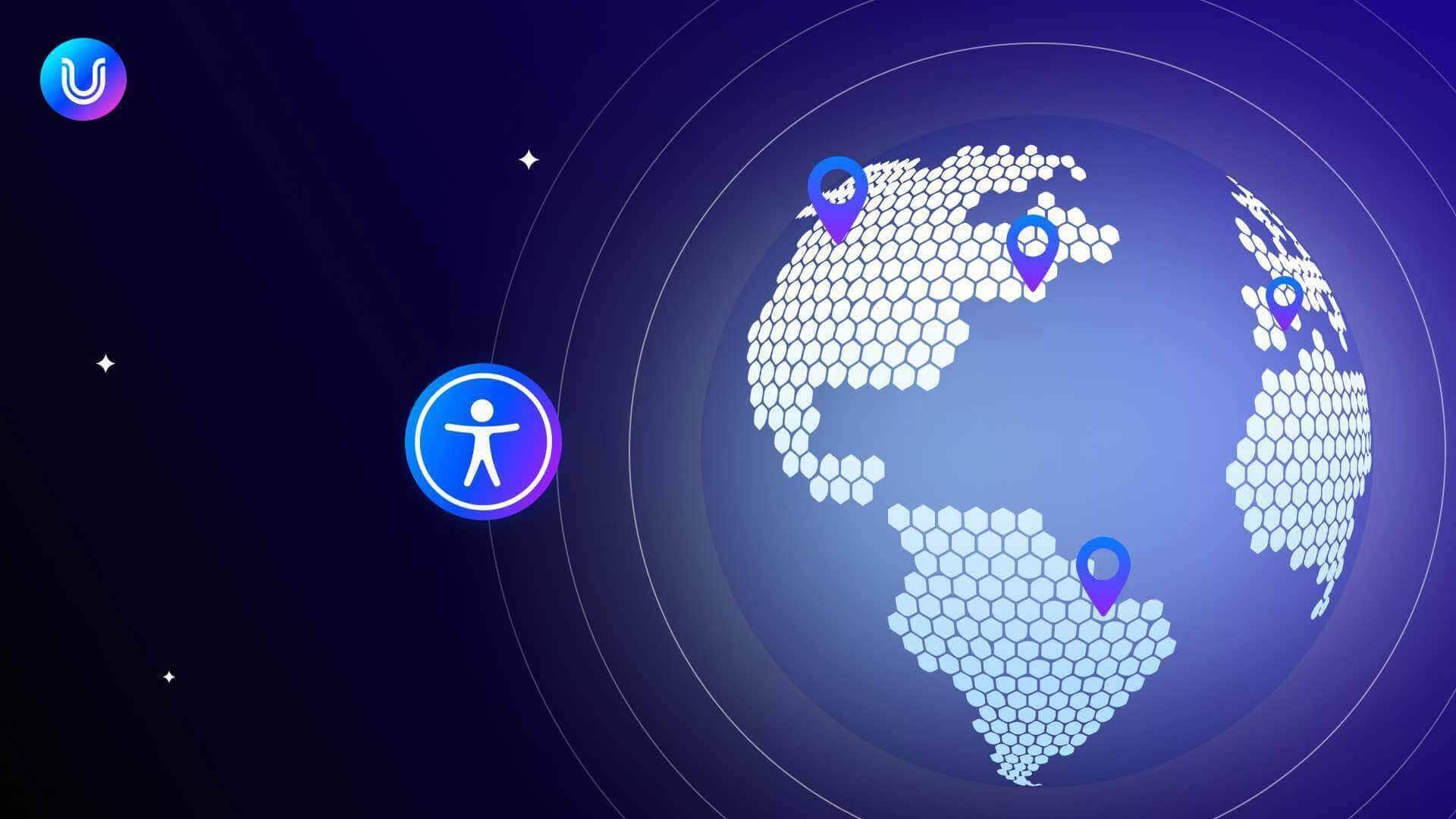The Wins and the Realities of Most Disability-Friendly Countries

It will come as no surprise that the countries that will be most favored by people with disabilities will be those that prioritize inclusivity, offer accessible infrastructure and demonstrate a commitment to equal opportunities. These qualities are the cornerstone of the most disability-friendly countries, as they lead the way in creating environments where everyone, regardless of their abilities, can more easily participate fully.
In this blog, we’ll look at the nations leading the way in inclusivity and accessibility, providing enjoyable and barrier-free travel experiences for people with disabilities. We’ll walk through 5 countries making efforts in accessibility and inclusion, sharing valuable insights, and providing actionable tips on how countries can enhance the accessibility of their physical spaces, while also addressing other key areas that are often overlooked.
Defining accessibility: The elements of disabled-friendly countries
While no single country has complete accessibility for people with disabilities, we are spotlighting those that are making commendable efforts and taking significant strides towards accessibility.
Join us as we journey through 5 countries, brought to life by fictional characters, to explore their accessibility achievements and areas needing improvements.
1. Sweden
Meet Sarah, a wheelchair user from London going on a dream vacation to Stockholm, Sweden. She has been saving for a trip to Stockholm (which ranks as the 10th most visited destination in Europe) for a while now.
Upon arrival, Sarah discovers Stockholm’s Accessibility database, which makes navigating the city pretty straightforward. It’s packed with info on over 8,000 locations, including how accessible they are, from shops to outdoor spots. She finds out which museums have ramp access, which cafes have accessible restrooms, and the best spots to enjoy the city’s stunning views without barriers.
At the Moderna Museet, Sarah is pleased to find guided tours for visitors with disabilities.
She is satisfied with most of the SL website which she uses to gain information on how to navigate the city’s streets and culture.
Further south, in Malmö, our character Sarah turns to Skånetrafiken. With a simple click on the ‘Översätt’ button, she finds herself able to navigate southern Sweden’s attractions.
Although Stockholm offers many accessible features for travelers like Sarah, the city has yet to prioritize accessible tourism in its marketing efforts. Sweden faces the challenge of improving digital accessibility and cohesive marketing to transform its varied accessible services into a unified tourism product. This step is essential to address organizational challenges that currently deter tourists and businesses. But even if these issues are resolved, a crucial question remains: How accessible are the websites and digital marketing efforts for people with disabilities?
2. Canada
Meet James, an adventurous traveler with a visual impairment. His journey begins on the bustling streets of Toronto, where he skillfully uses the city’s accessible transport system. The inclusive design of buses and trains, catering to individuals with disabilities, makes his navigation smooth and efficient.
James is well-informed about Canada’s dedication to accessibility, a commitment highlighted by the nation’s ratification of the United Nations Convention on the Rights of Persons with Disabilities (UNCRPD) in 2010, aiming to enhance the rights and inclusion of persons with disabilities.
He loves that some of Toronto’s best cultural attractions provide a range of accessible experiences tailored for visitors who are blind or partially sighted. Features such as audio tours, braille, large-print guides, and complimentary admission for support persons enhance accessibility, making exploration and inspiration more attainable than ever.
During winter, James, a sports enthusiast, ventures to Whistler. He’s thrilled by the adaptive skiing programs available, making the snowy slopes an inclusive and enjoyable experience for people with diverse abilities.
3. Germany
Emma, our fictional character who uses a wheelchair, finds the accessible public transportation in Germany incredibly helpful for her travels. She is particularly impressed by the buses and trams, easily identifiable with the wheelchair symbol, indicating their accessibility. The printed schedules at each stop, with footnotes showing which vehicles are accessible, make her journey smoother.
On these buses and trams, Emma appreciates the secure straps that keep her wheelchair steady during the ride. She also finds the buses equipped with platforms that lower to the curb particularly convenient, as they allow her wheelchair to easily roll on and be lifted into the vehicle. The thoughtful design of a blue button marked with a wheelchair symbol, which she can press to keep the doors open longer, adds to her comfort and ease of travel.
Even in buses without specialized lifts, Emma notices ample space for her wheelchair. She also observes seats marked with a blue and white cross at the front, designated for passengers with disabilities. These features make Emma’s experience on public transport not just feasible, but enjoyable, enhancing her independence and mobility in the city.
However, while Germany demonstrates commendable strides in physical accessibility, it prompts us to question the accessibility of the country’s digital spaces.
Considering that only a minuscule 3% of the internet caters to the needs of individuals with disabilities, the importance of digital accessibility becomes evident. And legal standards are rapidly evolving.
The impending European Accessibility Act (EAA), effective from June 28, 2025, will enforce the compliance of most digital products with the Web Content Accessibility Guidelines (WCAG) 2.1 level AA. This initiative is part of a global movement towards making the web universally accessible. So, as we commend Germany’s physical accessibility, we must also ask: are we ready to embrace the challenge of creating an equally accessible digital world?
4. Japan
Japan, a land rich in sights and experiences, has been perceived by individuals with disabilities as largely inaccessible. While this might have been true several decades ago, the situation has significantly improved.
In fact, Japan has introduced a service enabling deaf or hard of hearing individuals to make calls anytime via online assistants. This move, unique among G7 nations, follows recent legislation and includes emergency services access. The system, involving real-time interpretation of sign language or text, will require awareness among businesses for effective communication.
Let’s follow the fictional journey of Kenji, a young traveler with a hearing impairment, as he discovers the inclusive features of Japan.
To get around in Japan, James relies on his resourcefulness and modern technology to navigate the country’s vibrant landscape. He finds Japan’s commitment to improving travel for the deaf and hearing-impaired encouraging, especially as he explores the country’s unique offerings.
Although many aspects of Japan are accessible to James, he finds that a lot of websites still lack automatic speech recognition features, which is a significant barrier for him. They lack essential functionalities like text-based alternatives for any audio content, such as captions or transcripts for videos. Visual notifications for alerts that might otherwise be conveyed through sound are also missing. Many of the travel websites James wants to use are incompatible with screen reader software.
For much of his travels, James must write instructions and point to phrases in Japanese. His experience demonstrates the importance of preparation and the use of digital tools in making travel more accessible for individuals with hearing impairments.
James wonders, how much more seamless his journey would be if digital accessibility was as prioritized as physical accessibility?
5. Spain
Peter, a traveler living with cerebral palsy, found Spain, particularly Barcelona, to be exceptionally welcoming and accessible. Navigating with a wheelchair at times, he was struck by Spain’s commitment to inclusivity, a commitment reflected in the fact that around 20% of Barcelona’s visitors are individuals with disabilities, many of whom are wheelchair users.
In Spain’s urban centers, Peter is able to travel effortlessly thanks to public transportation systems like buses equipped with ramps. He also had no trouble finding hotels that were accommodating of his needs, ensuring a comfortable stay.
A standout aspect of his trip was the accessibility of tourist attractions. Many sites not only welcomed wheelchair users but also offered discounts or free entry for people with disabilities. These thoughtful gestures made Peter feel valued and included, turning his trip into more than just a holiday – it was an affirming and empowering journey.
Furthermore, Spain’s commitment to inclusivity is set to expand into the digital world. With the European Accessibility Act being enforced in 2025, Spain, alongside other European countries, should be preparing to make online spaces like websites and apps accessible to all, including those with disabilities.
Let’s now more fully turn our attention from the physical pathways of travel to the digital highways that are equally important in creating accessible spaces for people with disabilities.
Why a country’s online world matters too
A country’s online world is pivotal as it extends the principles of inclusivity to digital spaces, ensuring that websites and digital services are accessible to all, including people with disabilities.
This focus on digital accessibility is essential for providing equal access to information, services, and opportunities in our increasingly connected world. Here are 5 reasons why a country’s digital world is just as important as the physical:
1. Comprehensive Accessibility
True inclusivity in travel requires that both the physical and digital aspects of a journey are accessible. Physical pathways, such as accessible transportation and accommodations, ensure that people with disabilities can move and stay comfortably. Digital highways, like websites and mobile apps, provide essential information and services. Ensuring both are accessible means addressing all aspects of a traveler’s experience.
2. Information Access
Digital platforms are often the first point of contact for travelers. They offer vital information about destinations, accommodations, transportation options, and attractions. If these platforms are not accessible, people with disabilities might miss out on important information needed to plan their trip effectively.
3. Autonomy and Empowerment
Accessible digital tools empower travelers with disabilities by giving them the autonomy to research, plan, and book their travels independently. This independence is as crucial as the physical ability to access places and services.
4. Safety and Emergency Information
In travel, timely access to information can be critical, especially in emergencies. Accessible digital platforms ensure that safety and emergency information is available to all travelers, including those with disabilities.
5. Feedback and Improvement Loop
Digital platforms also offer a channel for feedback on accessibility issues. This feedback is essential for continuous improvement in both the digital and physical realms of travel.
After looking at the significance of both physical and digital inclusivity in travel, it’s important to examine how countries can enhance the accessibility and user-friendliness of their digital spaces, specifically through the Web Content Accessibility Guidelines (WCAG). Let’s understand what the WCAG is and how it plays a huge role in travel accessibility, extending from the physical world to the digital space.
What’s the WCAG and how does it relate to global accessibility?
WCAG are organized under four main principles, advising that web content should be:
1. Perceivable: Your web content should be crystal clear to all users. Imagine providing text descriptions for images, adding captions to videos, and making sure everything is easy to see and understand.
2. Operable: Think of your website as a smooth, user-friendly journey. It should be easy to navigate, whether you’re using a keyboard or assistive tools. Everyone should be able to explore the internet without barriers.
3. Understandable: Keep it simple and reader-friendly. Your text should be as clear as a sunny day, and your web pages should work in ways that anyone can predict.
4. Robust: Your content should work on all devices. It should be compatible with various technologies, including assistive ones.
WCAG plays a huge role in advancing global accessibility by setting standards and guidelines for digital content and services, which in turn can influence broader accessibility efforts, including those related to physical environments and products. It promotes the idea that accessibility is a fundamental human right, and its principles can be applied to create a more inclusive and accessible world for everyone.
UserWay: For inclusive digital journeys
For businesses to mirror the inclusivity seen in the world’s most disability-friendly countries, it’s essential that they don’t treat digital accessibility as an afterthought. This approach involves designing websites and digital content that are easily navigable and understandable by people with various disabilities, ensuring that digital inclusivity is a fundamental part of their operations.
Elevate your site’s accessibility with UserWay, a leader in digital accessibility used by over 1 million websites. It ensures ADA compliance and adherence to WCAG 2.1 & 2.2 guidelines, reducing legal risks. UserWay’s automated tools enhance your website’s usability, UI/UX, and commitment to inclusivity. Commit to inclusivity with UserWay.
FAQS
Is Spain wheelchair friendly?
Spain is generally considered wheelchair-friendly, with cities like Barcelona leading in accessibility through adapted streets, public transportation, and accessible tourist attractions.
How can countries implement accessibility initiatives for individuals with disabilities?
Countries can improve physical accessibility by investing in infrastructure like ramps, accessible public transport, and disabled-friendly public spaces. For digital accessibility, they can embed web accessibility standards, promoting inclusive web design, and providing assistive technologies to bridge the digital divide.
Which country is best to immigrate to for people with disabilities?
Spain is considered one of the best countries to immigrate to for disabled individuals, offering extensive accessibility features and inclusive policies.


Share